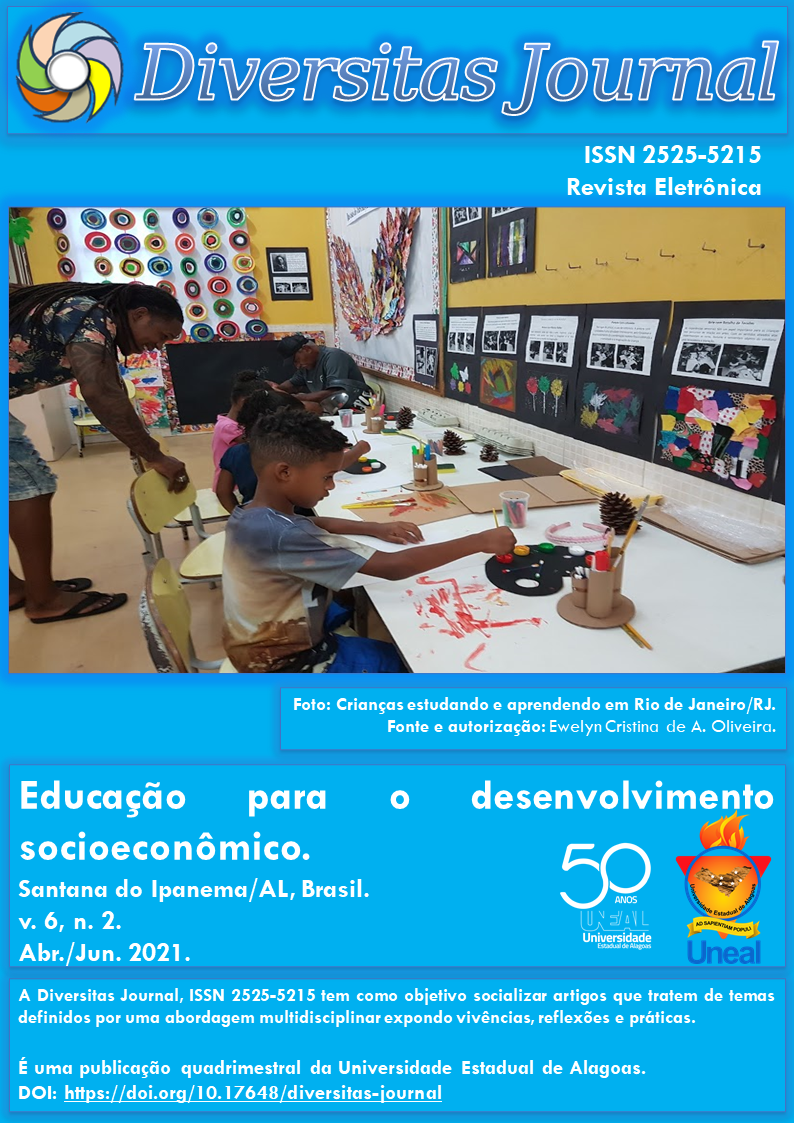Conhecimento dos graduandos de odontologia sobre materiais utilizados para restaurações classe II em dentes decíduos
DOI:
https://doi.org/10.17648/diversitas-journal-v6i2-1660Abstract
ABSTRACT: This study aimed to evaluate the knowledge of dentistry undergraduates regarding the materials used in class II restorations in deciduous teeth, as well as their advantages and disadvantages. The research was carried out during 7 months with students from the last year of graduation (5th grade). An initial visit was made at the dental schools of a municipality in Northeastern Brazil and the students answered a questionnaire containing questions related to the choice of restorative materials, their properties and utilities. The inclusion criteria were undergraduates in Dentistry, attending the last year of the said graduation. Students who had perhaps lost some discipline or locked the course were excluded from this study. The collected data were stored in the Microsoft Office Excel 2016 program, being analyzed with the help of the chi-square test. Composite resin (CR) was the material of choice in patients with low risk and low caries activity with the presence of the marginal crest (82.6%) and absence of marginal crest (67.4%). In patients with high laughter and high activity, conventional glass ionomer cement (IVC) was indicated in both situations 65.2% and 84.8% respectively. Regarding the advantages of the most reported materials by the participants in relation to the IVC was fluoride release (100%) whereas for CR was aesthetics (84.1%). On the other hand, the greatest disadvantage of IVC was related to syneresis and imbibition (75%) and CR was the contraction of polymerization (83.7%). It can be concluded that students have knowledge regarding the materials used in class II restorations in deciduous teeth, as well as their advantages and disadvantages.
KEYWORDS: Composite resin; Glass Ionomer; Dental materials; Pediatric Dentistry.
Metrics
Downloads
Published
How to Cite
Issue
Section
License
Copyright (c) 2021 Carla Lúcia Santos Lins, Mayara Cristien Soares Teixeira, Thayne Pereira Batista, Douglas Ferreira da Silva, Dayse Andrade Romão, Mariana Alencar Nemezio

This work is licensed under a Creative Commons Attribution 4.0 International License.
The Diversitas Journal expresses that the articles are the sole responsibility of the Authors, who are familiar with Brazilian and international legislation.
Articles are peer-reviewed and care should be taken to warn of the possible incidence of plagiarism. However, plagiarism is an indisputable action by the authors.
The violation of copyright is a crime, provided for in article 184 of the Brazilian Penal Code: “Art. 184 Violating copyright and related rights: Penalty - detention, from 3 (three) months to 1 (one) year, or fine. § 1 If the violation consists of total or partial reproduction, for the purpose of direct or indirect profit, by any means or process, of intellectual work, interpretation, performance or phonogram, without the express authorization of the author, the performer, the producer , as the case may be, or whoever represents them: Penalty - imprisonment, from 2 (two) to 4 (four) years, and a fine. ”


















